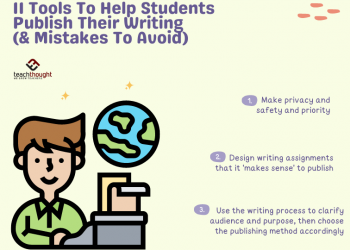From cars driving us to work to phones confirming our identities, exciting new technologies are rapidly transforming every aspect of our lives. For that, we can thank the exponential growth and advancement of STEM fields in recent decades. In fact, employment in STEM occupations has grown 79% since 1990, increasing from 9.7 million to 17.3 million in 2018. With these numbers rising consistently, we should expect to see an acceleration of modern technology use in the classroom.
Despite this huge growth, STEM education hasn’t caught up with demands. One area where this is pronounced is in the adoption of emerging technologies, such as software-defined instrumentation in engineering labs, as many educators are hesitant to disrupt the status quo and implement it into their curriculums.
What is software-defined instrumentation?
Software-defined instrumentation provides engineers, scientists, and students with greater access to more advanced and flexible tools at a lower cost. Traditional test and measurement equipment generally comes in the form of fixed-function hardware boxes with antiquated interfaces designed for a single purpose. However, software-defined instrumentation allows users to configure multi-function hardware with a software-first approach, accessing multiple instruments in one device through a single, consistent interface.
Significant advances in underlying technologies like field-programmable gate arrays (FPGAs), cloud services, and UX design are quickly creating a new, more capable generation of devices. The appeal of software-defined instruments is founded in the flexibility that software enables. Traditionally, this has come at the cost of complexity and performance challenges. But increasingly powerful FPGAs and modern user interface design offer a path to overcome these tradeoffs, pairing flexible configuration and control in software with high-performance execution in hardware.
How can software-defined instrumentation complement STEM education?
In STEM, students who learn differently, perhaps more visually, are not well catered to. For example, one of my learning challenges is my memory for details. If I don’t believe something is important, it’s impossible for me to engage. Unfortunately, the way that STEM subjects tend to be taught is quite linear: learn theoretical foundations first, and then recall them when useful later. Project-based learning is a great solution. It helps sharpen students’ concentration and motivation to achieve tangible, worthwhile goals while learning fundamental concepts.
Software-defined instrumentation provides many benefits to accommodate a wide range of learning styles. Software-defined instrumentation sets a new standard for flexibility by incorporating multiple sophisticated tools into one easy-to-use device. This versatility gives students access to more opportunities to visualize and interact with signals in meaningful ways. For example, most labs are equipped with oscilloscopes or data loggers to measure signals in the time domain, but before software-defined instrumentation, it was unusual for students to have access to advanced tools like spectrum analyzers or frequency response analyzers. With modern technology, students can discover alternative ways to view and characterize signals and systems (e.g., in the time and frequency domains). These new approaches can give students a much deeper understanding, often at a very intuitive level that locks in concepts for life, instead of until just after the next exam.
Recently, software-defined instrumentation has helped optimize power electronics coursework for electrical engineering education at the United States Air Force Academy. Being able to quickly debug and evaluate the quality of various electrical subsystems is an essential skill for an electrical engineer. Software-defined tools help students expedite this process, because all required test equipment for the lab is contained in a single device.
Software-defined instrumentation is also providing a visually engaging way to teach various tuning methods for proportional-integral-derivative (PID) controllers at the University of Texas at Austin. The PID controller provides one of the most common forms of feedback control. It is used in a range of applications, from cruise control in cars to motor control in drones. In software-defined devices, the graphical user interface dynamically visualizes the controller configuration and data, helping students see the inner workings of the system as they conduct their experiments.
Considering the valuable, wide-ranging benefits that software-defined instrumentation can bring to higher education, it might seem surprising that STEM education programs have been slow to adopt this technology, especially with innovation being at the core of what they’re trying to teach.
Why haven’t STEM educators caught on yet, and how can they catch up?
Part of the answer to this question comes down to psychology. It’s a big responsibility to educate the next generation of engineers and scientists and set them up for success — and not one to be taken lightly. Key decision makers in STEM education are often slow to adopt new technologies in their curriculums. They know their decisions help mold the minds of students who will later enter the workforce to solve complex global problems related to climate, industrial innovation, and technology boundaries. Because of the perceived risk associated with significant curriculum updates, STEM educators can be reluctant to adopt new ways of teaching. However, if they aren’t careful, their hesitancy to embrace software-defined instrumentation could leave the next generation of students underprepared to use the technology of the future.
A primary goal of STEM education is to prepare students for the workforce by teaching them how to use the cutting-edge technologies that are being utilized in the commercial and research sectors. In the years ahead, I expect to see a blurring of the lines between conventional instrumentation types. We will be able to focus more on the measurements and insights we are trying to get, rather than the multitude of boxes that we are using to get them. Students starting their university degrees today are not likely to retire before 2060. To serve a forward-thinking industry where new innovations and updates are constantly introduced, it’s imperative that we transition STEM education to focus on where technologies are going, not where they have been. To train the next generation of engineers, we must train them to use the next generation of technology — starting now.
Source by www.emergingedtech.com










